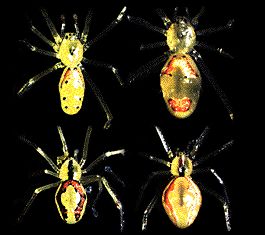The theory of natural selection (part 2) - What are the sources of polymorphism?

Polymorphism
Polymorphism is a condition in which a population possesses more than one allele at a locus. Sometimes it is defined as the condition of having more than one allele with a frequency of over 5% in the population. In this tutorial we have already encountered several causes of polymorphism:
• Mutation-selection balance
Polymorphism can be maintained by a balance between variation created by new mutations and natural selection.
• Frequency-dependent selection
When a genotype is rare, it is relatively favored by selection and it will increase in frequency; as it becomes commoner, its fitness decreases and there may come a point at which it is no longer favored. Thus an equilibrium frequency is reached and the genotype is maintained in the population.
• Heterozygous advantage
When heterozygotes are fitter than the homozygotes, natural selection will maintain a polymorphism. This may maintain alleles which would otherwise be selected against, as is the case with sickle cell anemia.
We will now turn to a further source of polymorphism: multiple niche polymorphism; regional variation in a species' natural environment may lead to a source of genetic variation in the species itself.
The image opposite shows the spectacular color polymorphism in the Hawaiian Happy-face spider Theridon grallator . This is possibly an adaptation to confuse predators, such as birds, by preventing them from establishing a reliable feeding pattern.
| Next |



